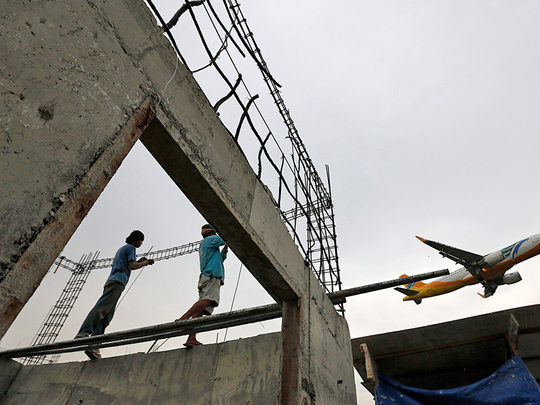
Manila: Growth slowed sharply in the Philippine economy in the third quarter because of typhoon damage and falling public spending, officials said Thursday.
The economy grew by 5.3 per cent in the three months to September — below expectations — and 5.8 per cent through the first nine months of the year.
Deputy chief statistician Romeo Recide added that gross domestic product (GDP) growth in this period fell to the lowest level since the last quarter of 2011.
The government has set a GDP growth target of 6.5-7.5 per cent for the whole of 2014.
“Given this quarter’s performance ... even meeting the low end of the target growth rate for the year could pose a big challenge,” Economic Planning Secretary Arsenio Balisacan told a news conference.
Typhoon Rammasun left 111 people dead or missing, caused a million people to flee their homes and left millions of others without power for several days across the country’s economic heartland in mid-July.
Fierce winds and destructive floods generated by typhoons led to a 2.7 per cent year-on-year contraction in farm output, Balisacan said.
Apart from agriculture, he said government consumption and public construction activities slowed as President Benigno Aquino’s government adjusted to “new spending protocols”, some imposed to fight corruption.
He also cited the “lingering negative impact” of Super Typhoon Haiyan, as well as delays in the layout of the government’s massive post-typhoon reconstruction programme across the devastated central Philippines.
Economic output had expanded by 7.0 per cent in the third quarter of 2013, before Haiyan, the strongest cyclone to ever hit land and the deadliest in the Philippines’ recorded history, caused widespread devastation.
Despite the slowdown, Balisacan said business sentiment remained optimistic.
He said export growth was robust in the third quarter, supported by the “strengthening of the global manufacturing industry” that boosted the country’s key exports of semiconductors, wiring harnesses for vehicles and garments.
Aquino’s spokesman Herminio Coloma said that despite the lower growth, the government was still maintaining a “positive outlook” for the rest of the year and for 2015.
He said the government was taking actions to boost agricultural productivity and farmers’ incomes while removing bottlenecks that restrained investment.
Trinh Nguyen, an economist of the Hong Kong and Shanghai Banking Corp. said that while the Philippines had favourable prospects, “the problem is that investment, especially public spending on key infrastructure needs, is not growing fast enough”.
“The slowdown of (the third quarter) growth points to immense opportunities for the economy to grow, especially if investment picks up,” the Hong Kong-based economist added.












